The World Nomad Games is a fairly new event – 2016 marks the second time it has ever been hosted! – but despite being in its infancy, this is one of the most exciting sporting and cultural events I have ever attended. This year, forty countries came together to compete in twenty-three different sports under the slogan “UNITED in FORCE! UNITED in SPIRIT!” and what an event it was.
So what are the games all about? Well, the mission behind the games is to preserve and showcase the rich tradition of nomadic culture found in Central Asia, and to promote values of peace through inter-cultural exchange. And need I mention that aside from the opening and closing ceremonies these games are entirely free to attend?!

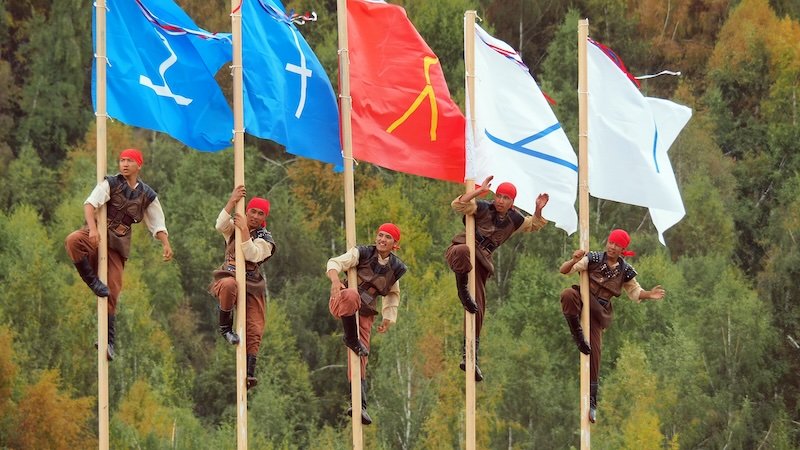
As a foreigner coming in with very sparse knowledge of the region, this event was a fascinating way to dive in headfirst. There wasn’t a single sport I could name or identify, or even an athlete I knew by name, but by the end of the games I was cheering along as Kyrgyzstan dominated the kok boru match and took the headless sheep as its prize. Yes, I told you these games would be interesting, but before we get into the actual sports, I want to tell you a little bit about the culture.
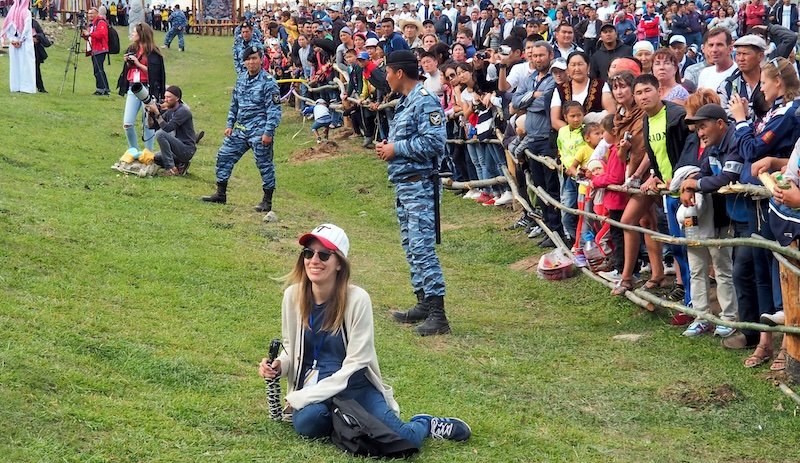
World Nomad Games Guide: Unique Sporting and Cultural Event in Kyrgyzstan
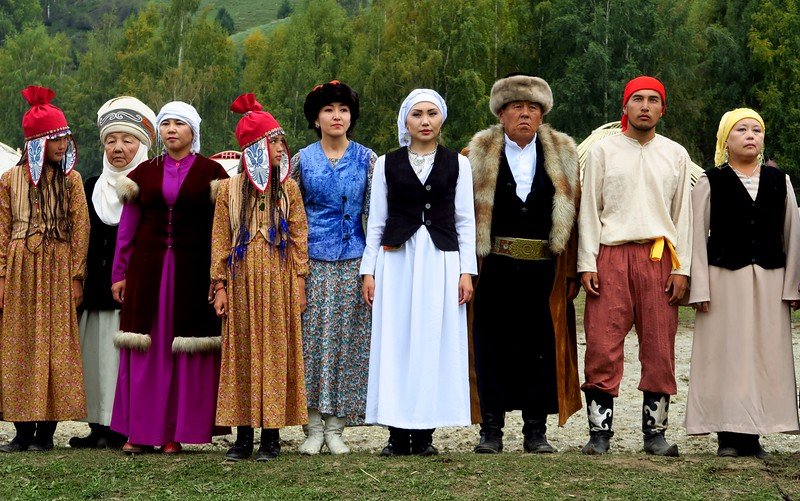
Nomadic Culture at the Folk Festival
The Kyrgyz were once a nomadic people whose traditional industry revolved around animal husbandry, which meant packing up the yurt and moving with the changing seasons. During the summer months, the nomads would relocate to the high-altitude pastures where their animals could graze and fatten up for winter, however, this is a tradition that was repressed by the Soviet Union with Kyrgyz families being forced to permanently settle into villages during the late 1920s and 1930s.
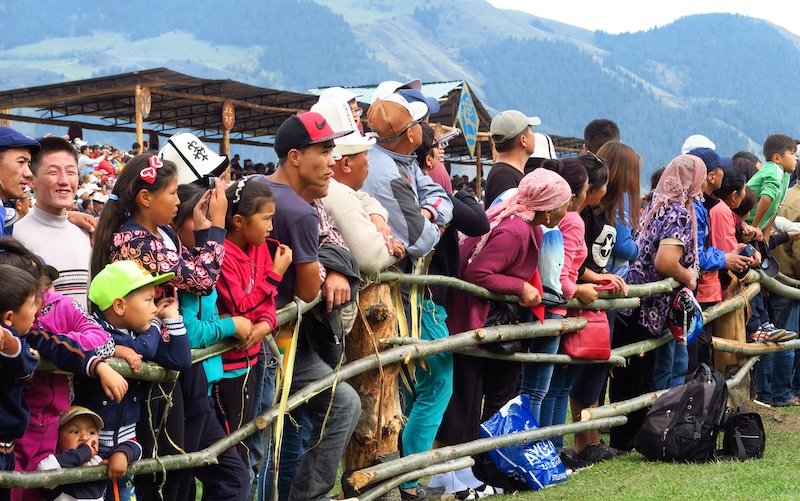
Today it is great to see the tradition of going up to the pastures being reasserted and that’s why, for me, one of the highlights of the World Nomad Games was the Folk Festival taking place on the Kyrchyn Jailoo.
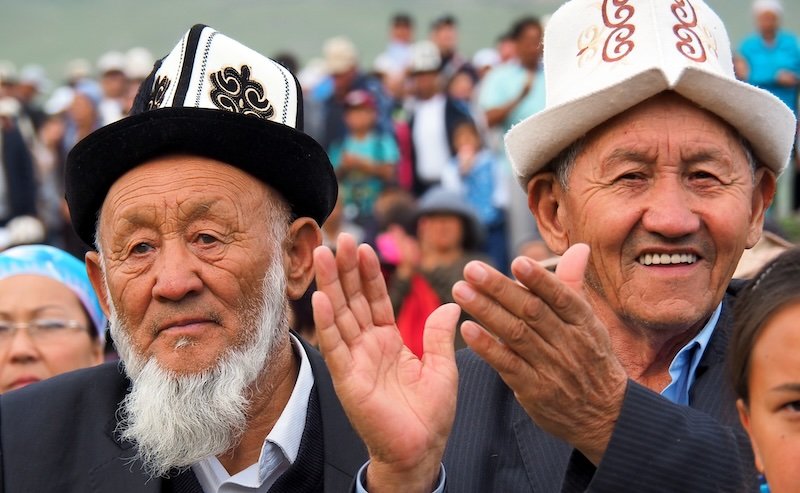
Jailoo?
‘Jailoo’ translates to summer pasture, and this is where many of the cultural performances and events were set. Picture a wide green valley surrounded by mountains covered in thick forest, and you’ve got yourself the perfect setting to celebrate Kyrgyzstan’s nomadic history.
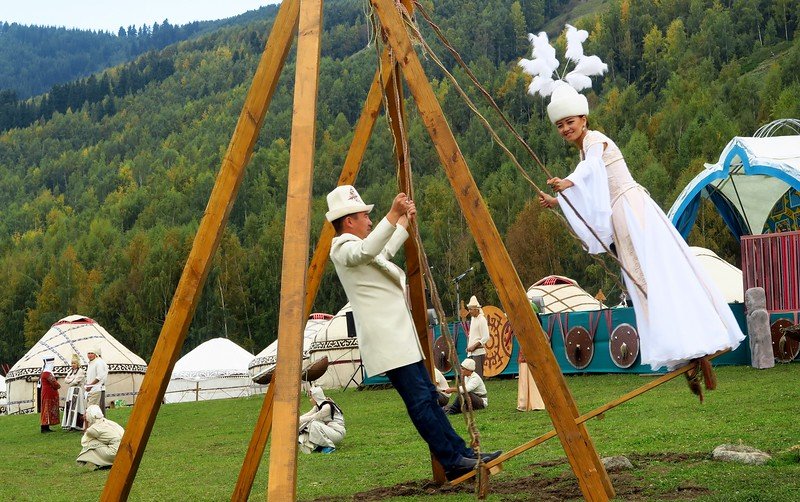
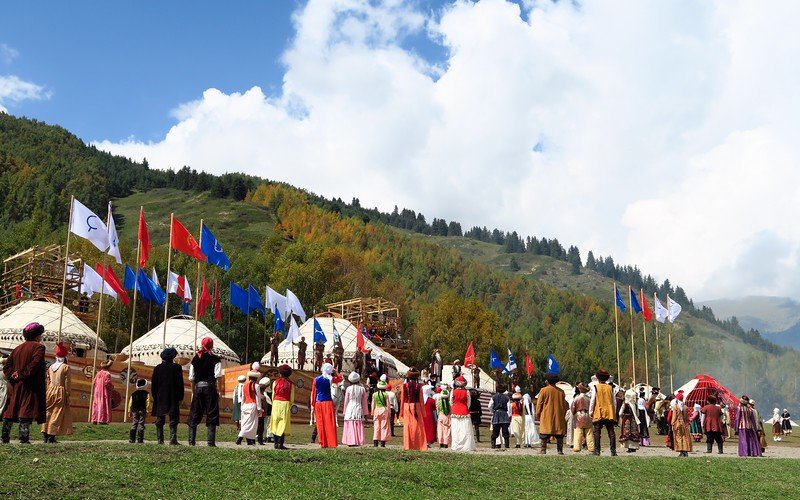
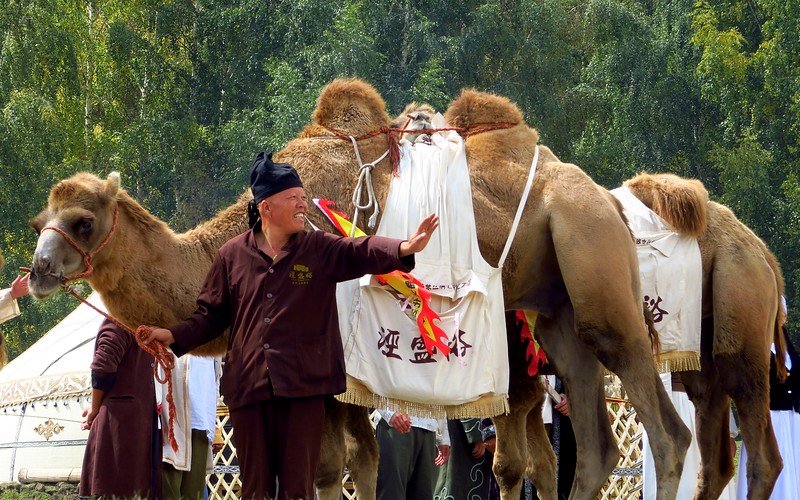
Kyrchyn was divided into various camps each representing a different region in Kyrgyzstan. I really enjoyed wandering through the different camps and seeing the various handicrafts on display – tapestries, musical instruments, and traditional hats – as well as catching some of the musical performances and dances.
Everyone was beyond friendly and we had people calling us in to have a look inside their yurts, while others kept trying to feed us; food plays a massive role in hospitality here.
Aside from that, Kyrchyn had yurt building competitions, costume displays, national dish contests, storytelling and so much more! This is also where the archery and hunting competitions were held, so overall there was plenty to keep us entertained. I spent two whole days here and I still feel like I barely scratched the surface. Trust me, if you do come to the World Nomad Games, don’t be put of by the distance to Kyrchyn because it truly is one of the highlights of the whole event!
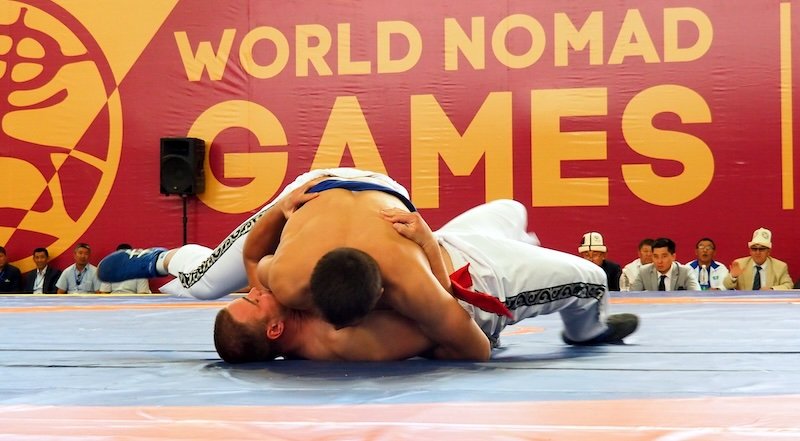
Sports at the World Nomad Games
There were lots of sports to catch at the World Nomad Games – more than you could cover in just a few short days, to be honest! – but if there’s one you shouldn’t miss, it’s kok boru.
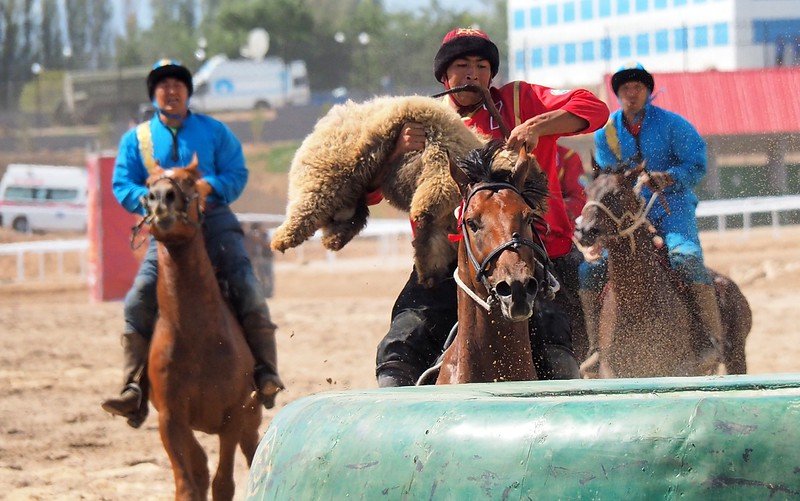
This is probably the strangest game you’ve never heard of. Picture a game of polo where two teams are trying to score on their opponent, except instead of a ball they’re using a headless goat or sheep. This may sound a little grim, but the animal has already been slaughtered and it is eaten by the winning team at the end of the match, so nothing goes to waste.
This is a sport that dates back centuries and it is widespread across Central Asia. Traditionally, children who wanted to play kok boru would approach a shepherd and ask for a slaughtered goat or sheep. They would then play the game and at the end return the animal to the owner as a sign of thanks. Because the meat had been tenderized during the game, this was actually considered a great gift.
I was worried that the animals at the World Nomad Games would perhaps go to waste, but that was not the case. A fellow blogger even ran into the USA team who lost the kok boru match against China, and they talked about how they had been invited to partake in the goat. Apparently they were still reeling with gastrointestinal issues, but you don’t turn down a celebratory barbecue. After all, isn’t this camaraderie what the games are all about?
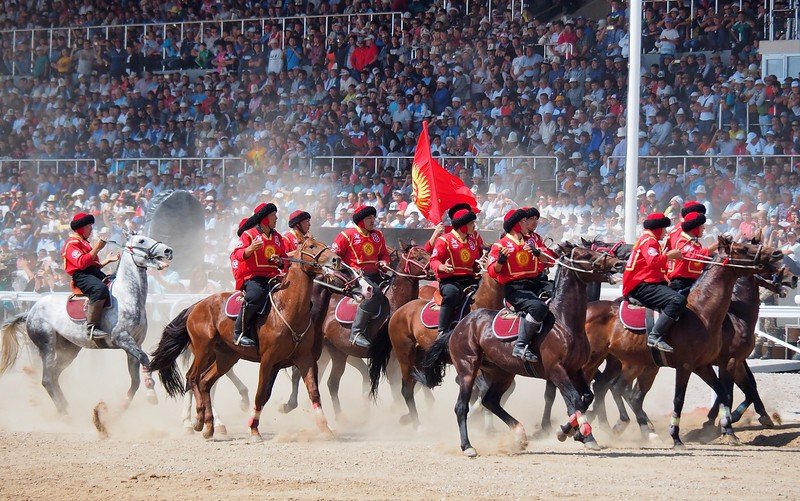
For anyone considering the World Nomad Games in the future, here’s a full list of the games you can expect to catch:
HORSE COMPETITIONS
Kok-boru
I’ve already written about this one, but basically it’s two teams on horseback trying to get a sheep or a goat into the goal.
Er enish
Wrestling is hard enough, right? Well, why not add another element of difficulty by wrestling on horseback! That’s what this sport is all about! Apparently this game has a bit of a military tradition as wrestling on horseback was something that developed on the battlefields of Central Asia.
Cirit
This is a game with Turkish roots and it involves throwing a stick at your opponent while riding on horseback. It kind of looks like they’re throwing spears at each other, minus the deadly tip.
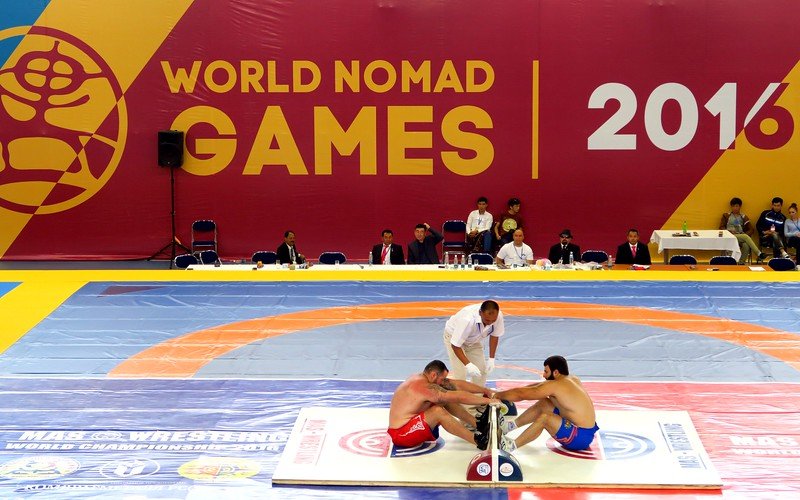
WRESTLING
Mas-wrestling
In this game two wrestlers sit facing each other with the soles of their feet on opposite sides of a wooden board. The wrestlers then grab a stick with their hands and they pull until they’re able to get the stick or pull the opponent onto the other side of the board. Sounds simply enough but players were turning beet red from the exertion.
Alysh
This is another wrestling game where wrestlers rest their heads on their opponents shoulder, and then grab on to their opponent’s belt with both hands. The goal is to pin down the other person by holding down his belt.
Kyrgyz kuresh
In this wrestling game both opponents are bare chested and the goal is to throw the other person over their shoulder. The two players stand on a mat facing each other, and grab onto each other’s belts with both hands, tugging and pulling until they’re able to swing the other person over.
Kazakh kuresh
In this form of Kazakh wrestling, wrestlers dress in special jackets and then try to knock their opponent down to the ground.
Goresh
Here two opponents meet on the mat and they try to force the other person to touch the ground with any part of their body except their feet.
Gyulesh
This is yet another wrestling game where two opponents meet and use a series of holds, grips and throws, to get the other person over their shoulder.
Aba kurosh
In this wrestling game, the goal is once again to get the opponent over your shoulder, but the wrestling is accompanied with live traditional musical instruments that feature both drums and wind instruments.
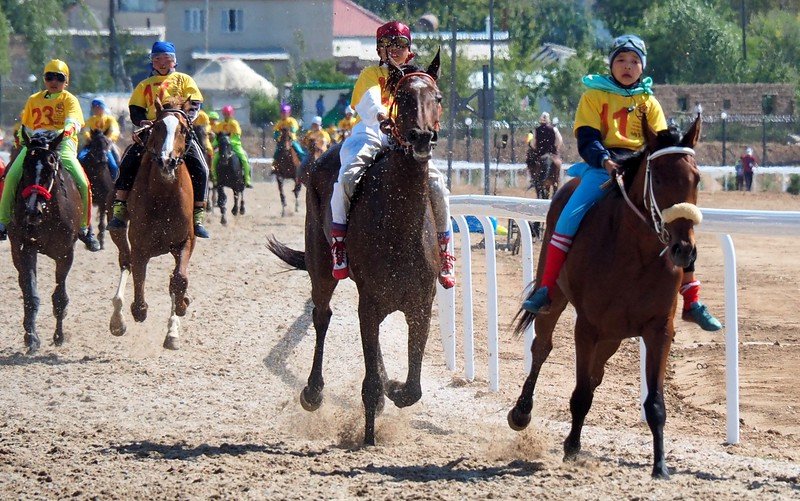
HORSE RACES
Chong at chabysh
This translates to ‘racing to the far distance’ and it is a long distance horse race run over 80 kilometres, in a team that consists of over 21 horses. All riders must be over 18.
At chabysh
This is a slightly shorter long distance race that is run over 22 kilometres. Riders over 12 years old are allowed to participate.
Jorgo salysh
This race is for riders over 12 years old and it covers 11 kilometres.
Kunan sabysh
This one is run with stallions that are between 2-3 years old and it also covers 11 kilometres.
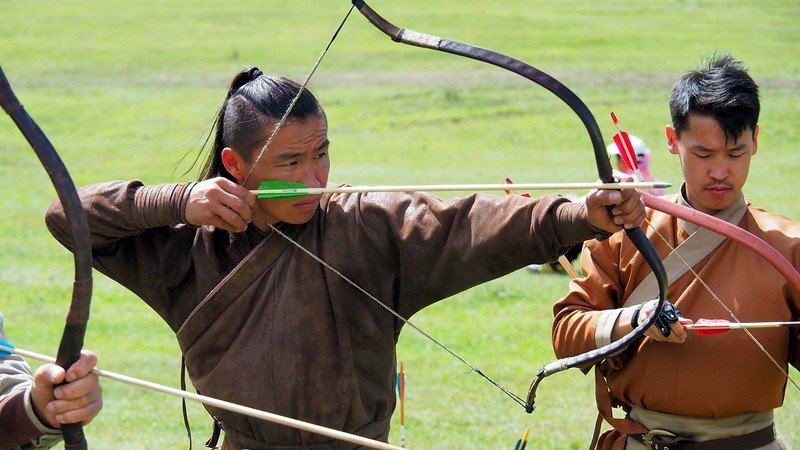
ARCHERY GAMES
Joo jaa atuu
This game involves hiking and shooting with a bow and arrow.
Atchan jaa atuu
And this one involves horseback riding while shooting with a bow and arrow.
Mass bow range and accuracy
Target shooting with a bow and arrow.
INTELLECTUAL GAMES
Toguz korgool
To translate the game, ‘toguz’ means nine and ‘korgol’ means sheep droppings. In this board game, each player has nine wells and the goal is to collect as many sheep droppings as possible. I’m not sure why you’d want sheep droppings in your well, but that’s how the game works.
Mangala
Mangala means ‘to shift’ or ‘to move’ and it is the equivalent of chess in this part of the world. In this board game, there are 48 stones, 2 storage wells, and a total of 12 wells. The goal of the game is to empty the storage wells and fill each of the smaller wells with 4 stones.
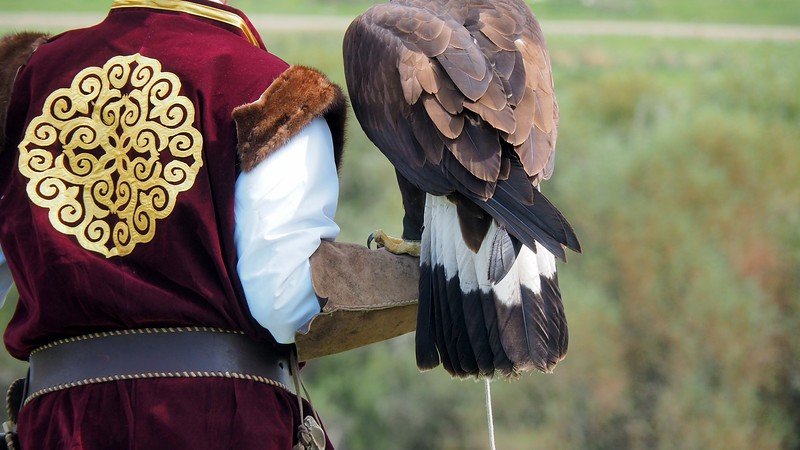
HUNTING GAMES
Salbuurun
This part of the competition involves hunting with birds of prey and dogs. There is a competition to see how fast eagles can fly as hunters call them from 200 meters away and also how quickly they can race after a fox skin. There’s another competition where hunters get their falcon to simulate an air attack on a lure made of feathers, as well as a Taigan dog race to see how quickly dogs can run after a fox or hare skin.
THE NATIONAL GAME
Ordo
This is a military game that involves mapping out an attack on the enemy. Basically, a circle is drawn on the ground and then players try to knock the ‘Khan’ out of the circle and thus take over his palace. This game is played with small animal bones.
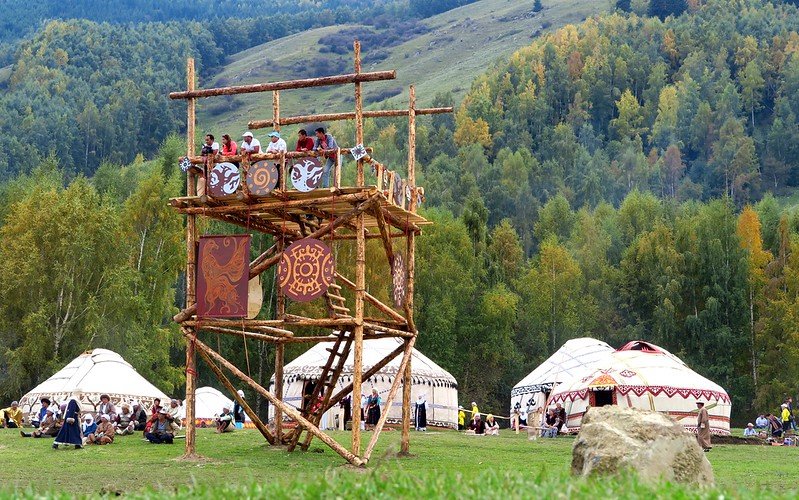
The Layout of the World Nomad Games
The World Nomad Games were spread out across Cholpon-Ata and the surrounding area, so it’s a good idea to get a hold of the schedule and figure out what events you want to attend and where those are held. Here’s a quick look at the locations and what games took place in each of theses:
Hippodrome
Located in Cholpon-Ata. This is where the horse races and horse competitions were held, as well as the opening and closing ceremonies.
Sports and Recreation Centre
Also known as the Gazprom Building, this one is located in Cholpon-Ata just west of the Hippodrome. This is where the martial arts events were held.
Kyrchyn Jailoo
This is a green pasture located about 40 kilometres east of Cholpon-Ata and just north of Semënovka. If you don’t have your own vehicle, the best way to get here is by using the shuttles. This is where the folk festival was held along with the archery and hunting competitions.
Aurora Sanatoria
The Sanatoria is located 17 kilometres east of Cholpon-Ata and this is where the intellectual games were held.
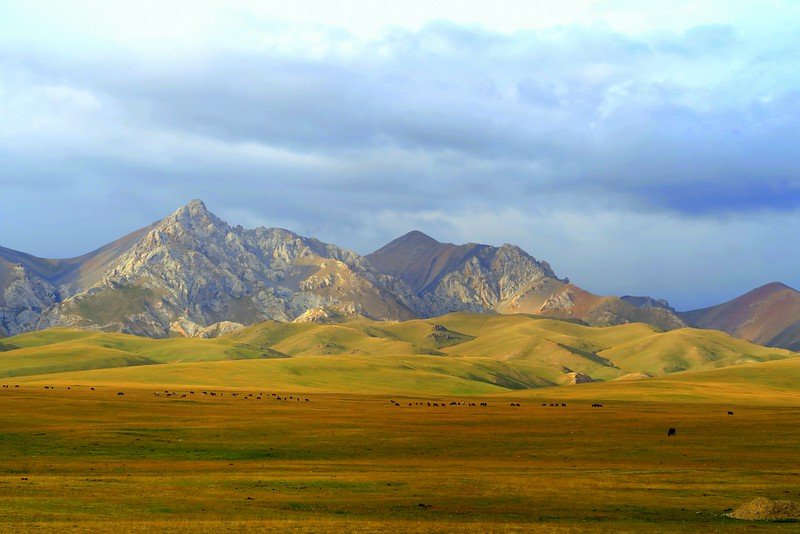
Exploring the Surrounding Area
The World Nomad Games are 6 days in length, so this also gives you plenty of time to take some day trips or extend your stay in Kyrgyzstan and spend some time travelling around the region; I would suggest the latter!
If you want to do some sightseeing around Cholpon-Ata, you have Issyk-Kul Provincial State Historical Culture Museum Reserve; it’s a long name, but it’s a field covered in large boulders where you can see petroglyphs. There’s also Rukh Ordo, which is a quirky theme park that looks at historical figures, Kyrgyz legends, and the interplay of 5 religions all under one setting. And aside from that you can also go on a boat tour of Issyk-Kul or just enjoy a dip in the lake.
Now see the picture of the mountains right above? That’s on the shores of Song Kol Lake and it is one of the most beautiful places you will get to experience in Kyrgyzstan, so find a way to carve out a couple of days and do a horse trek and yurt stay out there! It’s not really that close to Cholpon-Ata, but it’s worth the detour either way.
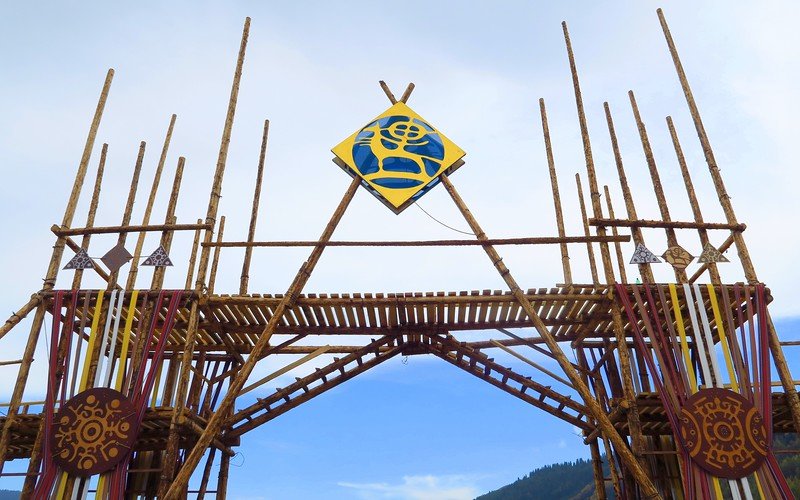
Tips for the World Nomad Games
- Book your accommodations in advance. This was a well attended event so you’ll want to make sure you book your hotel or hostel in advance. Don’t leave things to chance or you could end up in the outskirts of town!
- Wear comfortable closed shoes. I would suggest hiking boots if you have those, or if not a solid pair of running shoes. The path leading to the Kyrchyn Jailoo was starting to get quite muddy towards the end of the festival.
- Bring water, sunscreen, and a hat. You’ll likely be spending long days out in the sun and it’s easy to get a burn without realizing it.
- Pack a fleece and a rain jacket. The temperature is cooler on the jailoo and things can get quite chilly and rainy when the clouds roll down from the mountains, so it’s best to be prepared.
- Carry toilet paper and hand sanitizer. The porta potties at Krychyn were less than pleasant so I would refrain from using those and go for the makeshift squat toilets instead. You’ll also want to come prepared with toilet paper and hand sanitizer.
- Check for a revised version of the schedule. We found that the schedule for some of the events changed last minute with some things being pushed forward and others pushed back, so if there’s something you don’t want to miss, check the updated schedule that’s posted on the exterior of the building.
- Bring money for food and snacks. There were lots of food stands at the Hippodrome and outside Kyrchyn, so if you don’t want to pack a lunch, bring some cash and sample the local food.
- Stay and travel in Kyrgyzstan. Once the games are over, why not stay and travel around the country? You could consider horse trekking in Song Kol, enjoying the local cuisine in Karakol, staying in a lakeside yurt in Issyk Kul and so much more!
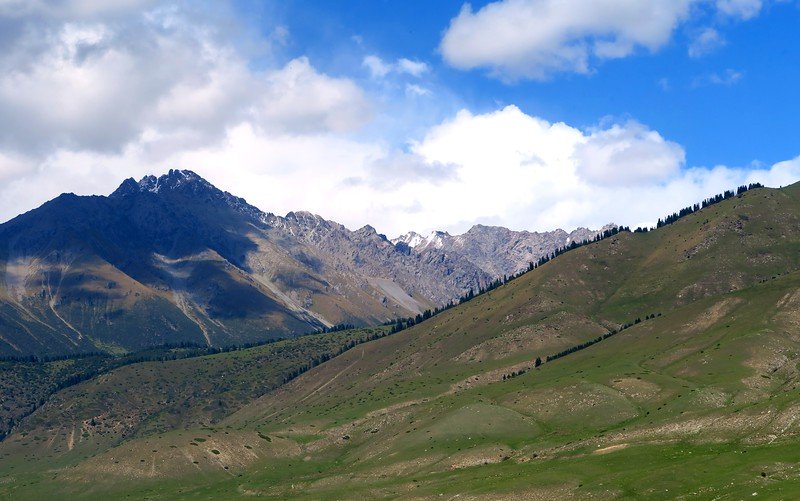
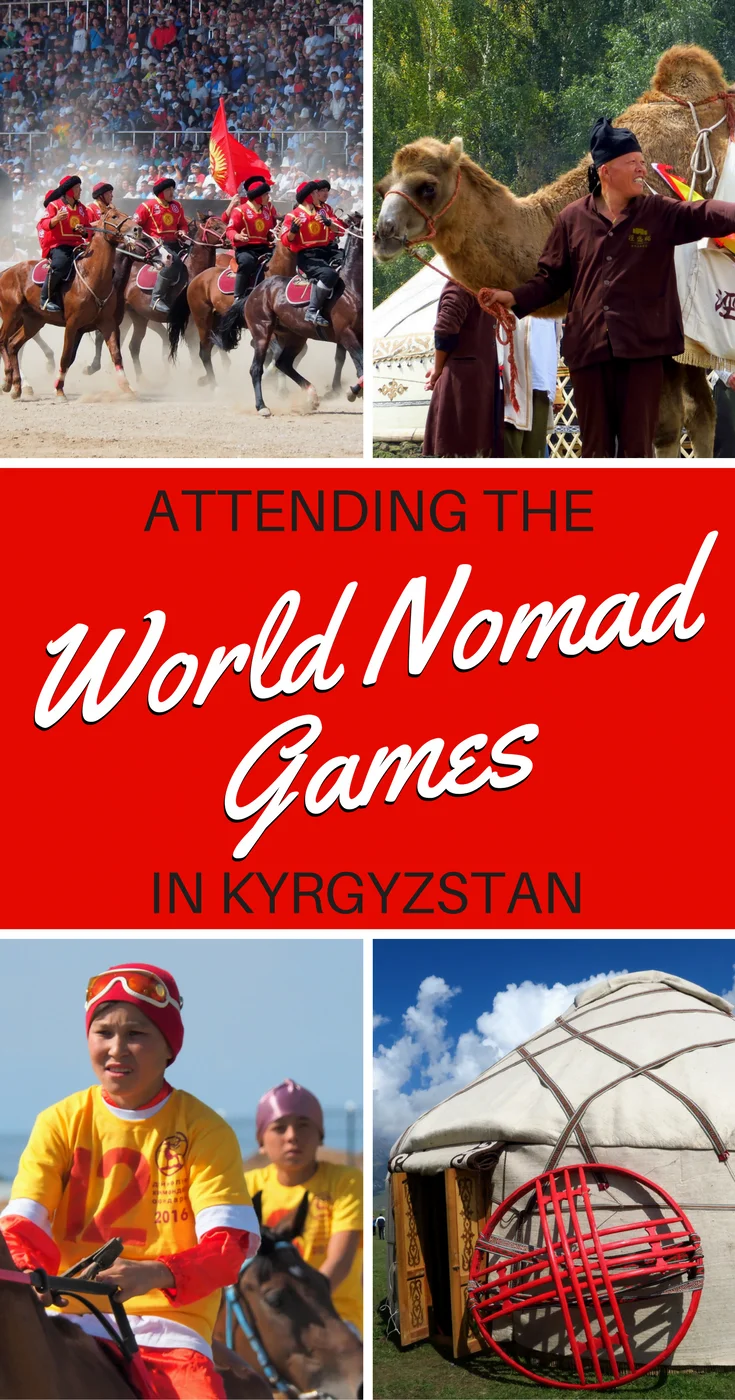
Plan Your World Nomad Games Trip: Practical Add-On Guide, Travel Tips & Planner
When to Go and What to Expect
The Games typically run for about six days with an opening ceremony, competition days (sports + folk festival), and a closing ceremony. Most events cluster around Cholpon-Ata on Issyk-Kul’s north shore and the Kyrchyn Jailoo (summer pasture) in the mountains.
- Climate: Expect strong sun at altitude, quick weather changes, and cooler temperatures on the jailoo. You can have T-shirt weather at the Hippodrome and fleece weather in Kyrchyn on the same day.
- Crowds: Opening/closing ceremonies and kok boru finals are the busiest. Folk-festival days at Kyrchyn feel festive rather than crowded thanks to the wide valley.
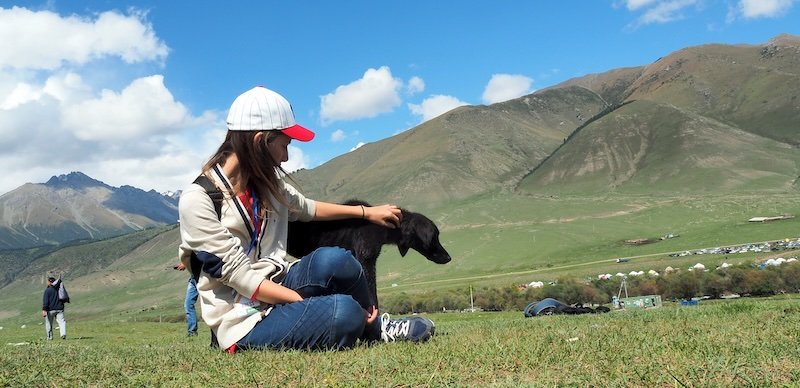
Venues at a Glance (Pick Your Base)
| Place | What Happens Here | Best For | Travel Time from Cholpon-Ata | On-the-Ground Tips |
|---|---|---|---|---|
| Hippodrome (Cholpon-Ata) | Opening/closing ceremonies, horse races, kok boru, er enish | Big-ticket matches; easy food stands | In town | Arrive early for finals; bring binoculars for goal-mouth action |
| Sports & Recreation Centre (Gazprom) | Wrestling styles (kuresh, alysh, mas-wrestling), indoor martial events | Intense match days, weather-proof | 5–10 min | Lines move fast; photo from higher rows for full-mat shots |
| Kyrchyn Jailoo | Folk Festival (yurts, crafts, music, dance), archery, salbuurun (eagle/falconry & dog events) | Culture deep-dive, landscape | ~1 hr by shuttle/drive | Mountain weather: sun hat + fleece + rain shell in the same day |
| Aurora Sanatoria | Intellectual games (toguz korgool, mangala) | Quiet, curious spectators | ~25–30 min | Great for a slower half-day between big matches |
Where to stay: If your heart is set on kok boru and ceremonies, base in Cholpon-Ata (walk/bus to the Hippodrome). If you’re culture-first, consider accommodation on the road toward Kyrchyn to shorten those morning transfers.
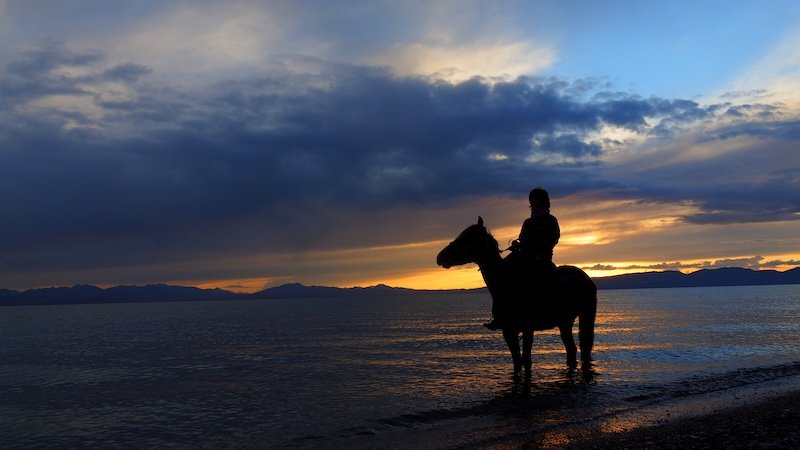
Getting There and Getting Around
Reaching Issyk-Kul
- From Bishkek → Cholpon-Ata: 3.5–5 hours depending on traffic/roadworks.
- Marshrutka (minibus): Cheapest; frequent; limited luggage space.
- Shared taxi / private car: Faster and comfortable for groups.
- Self-drive: Scenic lakeshore; check road conditions and fuel up in towns.
Local Transport During the Games
- Official shuttles often run to Kyrchyn from Cholpon-Ata; they’re the easiest way up the valley.
- Taxis are plentiful around major venues (agree on price in advance).
- Walking works within Cholpon-Ata (Hippodrome ↔ town), but distances stretch at Kyrchyn.
Ticketing: Historically, sports outside of ceremonies have been free to attend; that said, details change—always confirm the current policy and how to secure ceremony seats.
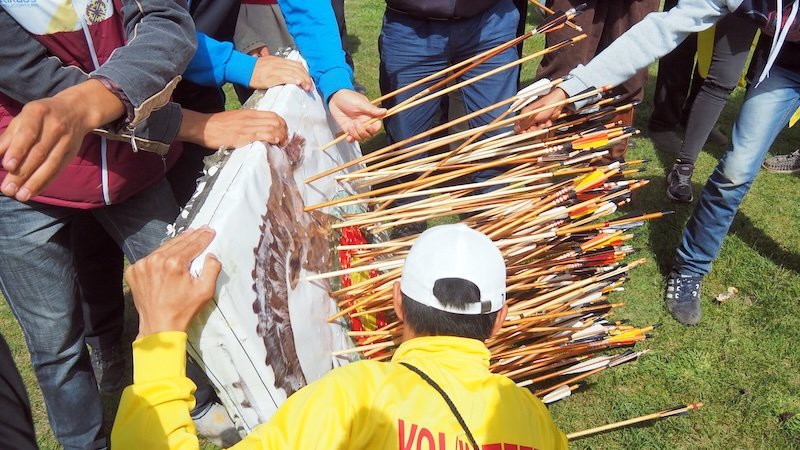
Budget Snapshot (Typical Ranges)
These ballparks help with planning. Costs vary by year and demand.
| Category | Budget | Mid-Range | Splurge |
|---|---|---|---|
| Room/Night | Guesthouse/hostel | Small hotel/yurt stay | Lakefront hotel/ryokan-style |
| Meals/Day | Market stalls, café plates | Mix of café + sit-down | Multi-course dinners, specialty tastings |
| Local Transport | Shuttle + occasional taxi | Private transfers to Kyrchyn | Driver on call |
| Extras | Souvenirs, craft demos | Guided day trips | Ceremony seats (if ticketed), VIP experiences |
Cash & cards: Bring som (KGS) for food stalls, rural shops, and taxis. ATMs exist in bigger towns but can be finicky on festival days.
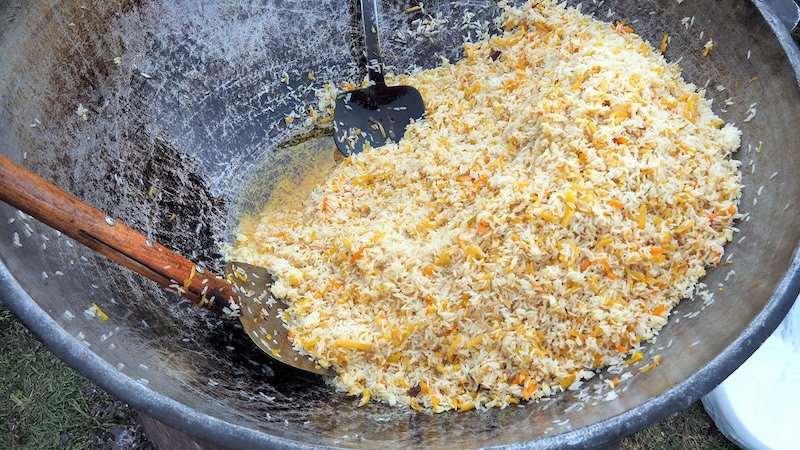
What to Eat (and Where to Find It)
Kyrgyz hospitality is edible. At the Hippodrome and around Kyrchyn you’ll find pop-up stands and outdoor kitchens:
- Beshbarmak: Hand-cut noodles with boiled meat and onion broth—ceremonial and filling.
- Kuurdak: Pan-fried meat and potatoes; the perfect cold-weather fuel.
- Lagman: Hand-pulled noodles with vegetables and meat in a rich sauce.
- Manty: Steamed dumplings; lamb or pumpkin are common.
- Kymyz/Shoro: Fermented mare’s milk (kymyz) and grain-based soft drinks (shoro).
- Boorsok: Puffy fried dough bites passed around like hugs.
Packing List (Field-Tested)
Day Pack Essentials
- Sun hat, SPF, lip balm
- Fleece + packable rain shell (yes, both!)
- 1–2 L water (refillable), snacks
- Hand sanitizer, toilet paper (for remote facilities)
- Cash in small bills, phone power bank
- Binoculars (kok boru becomes epic up close)
Clothing & Footwear
- Sturdy closed shoes (mud + uneven ground at Kyrchyn)
- Quick-dry layers; scarf or buff for wind/dust
- Light gloves and beanie if you run cold
Media & Tech
- Fast-focus camera or phone with burst mode
- Dry bag / zip pouches for dust and sudden showers
- Offline maps; event schedule screenshots
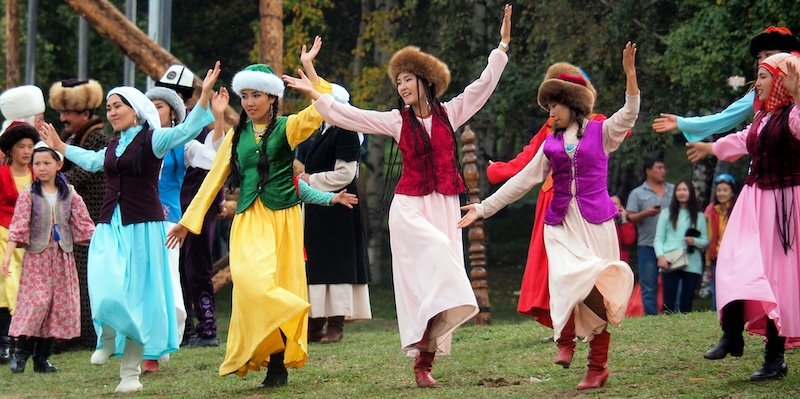
How to Read the Schedule (and Not Miss the Good Stuff)
- Anchor your days around a headliner (kok boru, er enish, wrestling finals).
- Pair big matches with nearby culture (e.g., Hippodrome finals + lakefront sunset; Kyrchyn archery + yurt-craft demos).
- Check the board at each venue each morning—updates happen.
- Build buffer before opening/closing ceremonies; security + lines take time.
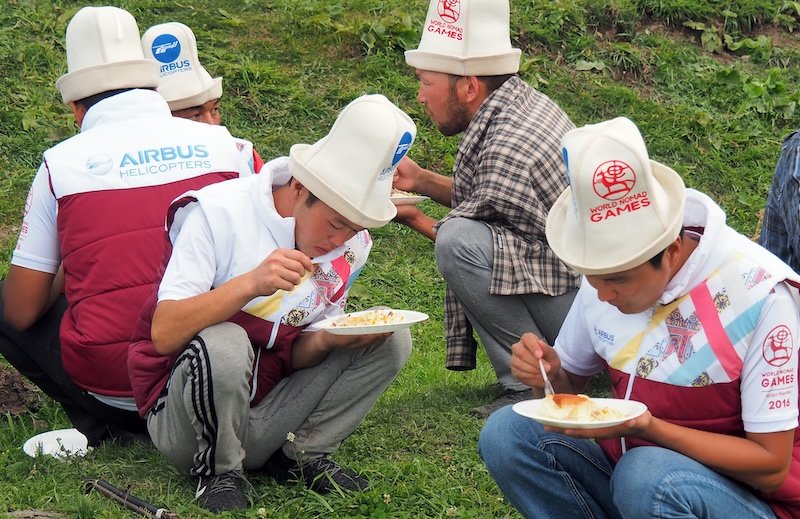
Safety, Health & Comfort
- Altitude/Weather: The jailoo can be chilly even in sunshine; add layers before the shuttle heads up.
- Hydration & food: Eat small and often; try everything, but pace rich meats if you’re not used to them.
- Facilities: Expect a mix of porta potties and squat toilets; have TP and hand gel.
- Wildlife & dogs: Festival areas are busy and safe; give working eagles and taigan dogs space.
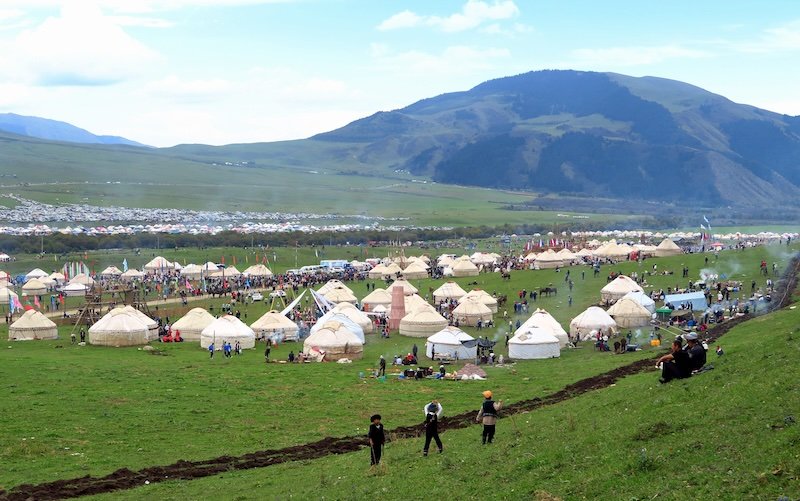
Choosing Tours, Drivers & Guides
| Topic | Ask This | Green-Flag Answer Looks Like |
|---|---|---|
| Driver to Kyrchyn | “Price each way? Wait time included?” | Clear round-trip rate, waiting included or per-hour rate stated |
| Shuttle Info | “First/last departure? Frequency?” | Printed or posted timetable; staff confirm last bus |
| Yurt Visit | “Hosted by local family? How long?” | Named host family; 20–40 min welcome with tea |
| Craft Demo | “Hands-on? Price of materials?” | You make something small; transparent costs |
| Side Trips | “What’s included?” | Transport, entrance fees, lunch noted; return time clear |
Micro-Itineraries You Can Copy
Two Days Focused on Sport
Day 1 – Horsepower & Hype
- Morning: Kok boru qualifiers at Hippodrome (arrive early to watch warm-ups).
- Midday: Food-stall lunch (manty + tea).
- Afternoon: Er enish (wrestling on horseback).
- Evening: Lakefront walk in Cholpon-Ata; quick visit to petroglyph field if time allows.
Day 2 – Grip & Grit
- Morning: Mas-wrestling and kuresh finals at Gazprom Centre.
- Midday: Café break; try lagman or kuurdak.
- Afternoon: Doton… just kidding—back to the Hippodrome for horse races.
- Evening: Street snacks; early night if you’re catching dawn shuttles to Kyrchyn.
Two Days Culture-Forward
Day 1 – Kyrchyn Immersion
- Early shuttle up the valley.
- Yurt-building demo, archery, wandering crafts camps; talk to instrument makers.
- Afternoon: Salbuurun (eagle/falconry + taigan dog runs).
- Golden hour: Music and dance at the main stage; shuttle down.
Day 2 – Town & Traditions
- Morning: Rukh Ordo + lake boat ride (weather-dependent).
- Afternoon: Return to Kyrchyn for performances you missed; late lunch with boorsok and tea.
- Sunset: Last light over the meadow; pack layers for the ride.
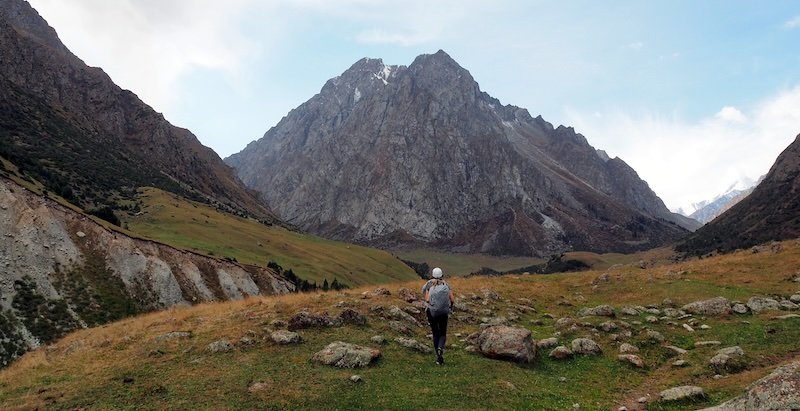
One-Week Kyrgyzstan Add-On
- Days 1–3: World Nomad Games (mix sport + Kyrchyn).
- Day 4: Karakol for Dungan cuisine and wooden cathedral/mosque.
- Day 5–6: Song-Kol horse trek and yurt stay (alpine meadows, unreal stars).
- Day 7: Return toward Bishkek via Burana Tower (Silk Road history).
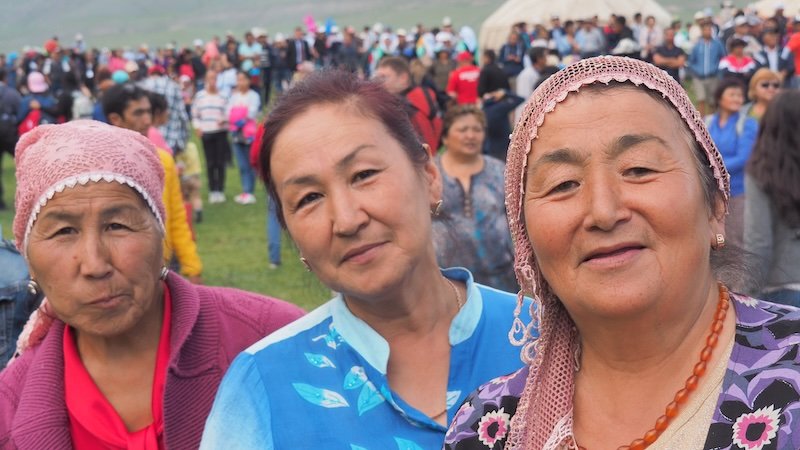
Save-This Checklist
- Accommodation booked early (Games week fills quickly).
- Arrival transfer to Cholpon-Ata arranged.
- Ceremony tickets (if required) confirmed.
- Daily plan with one anchor event + one cultural block.
- Shuttle times to Kyrchyn saved; last bus highlighted.
- Day pack ready: water, SPF, hat, fleece, shell, TP, sanitizer, cash.
- Offline maps; schedule screenshots; key phrases downloaded.
- Side trip penciled in (Shirak… Song-Kol… Karakol).
- Small thank-you gifts (postcards/candy) for hosts.
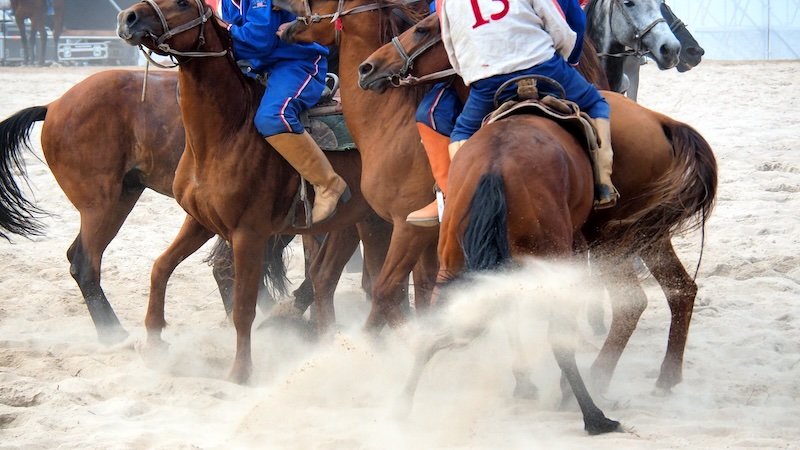
12-Question World Nomad Games FAQ
- Are the events really free?
Historically, most competitions have been free to attend; opening/closing ceremonies may require tickets. Always confirm the current edition’s policy and how to secure seats. - Where should I base myself?
Cholpon-Ata works best for most visitors: you’re near the Hippodrome and transport to other venues. If you’ll spend multiple days on the jailoo, consider a stay en route to Kyrchyn. - How do I get to the Kyrchyn Jailoo without a car?
Use the official shuttles (check first/last departures). Taxis and shared cars also run the route—agree on a round-trip price and waiting time. - Is kok boru upsetting to watch?
It’s a deep-rooted pastoral sport where a slaughtered animal is used as part of the game and consumed afterward by the winning team/community. If the tradition isn’t for you, focus on horse races, wrestling, archery, and cultural events—you’ll still have a full experience. - What should I wear on the jailoo?
Layers. Think sun hat + T-shirt + fleece + rain shell. Closed shoes for mud/uneven paths. Temperatures swing quickly at altitude. - Can I bring kids?
Yes. Open spaces, music, horses, and eagles captivate little ones. Pack snacks, sunscreen, and warm layers; plan bathroom breaks at venues with better facilities. - How do I avoid missing headline events?
Pick one anchor event/day, arrive early, and check the update boards. Keep a “float day” for reschedules or finals you didn’t expect to love. - Is English widely spoken?
In festival areas you’ll meet volunteers with some English or Russian. Learn a few Kyrgyz phrases and carry translation apps; smiles + hand gestures work wonders. - What are respectful photo practices?
Ask before portraits, especially of elders and artisans. Inside yurts, follow your host’s lead. Avoid flash during performances. - What’s the food situation?
Plenty of food stalls at major venues. Expect meats, noodles, dumplings, breads, tea. Cash is king; carry small bills. - How early should I book accommodation?
As early as possible once dates are announced—the lakefront fills first. Consider guesthouses slightly inland if you’re late to the party. - What else should I see nearby?
Rukh Ordo and the petroglyph field around Cholpon-Ata, Karakol for architecture and cuisine, Song-Kol for yurt treks, and Issyk-Kul boat rides for lake views.
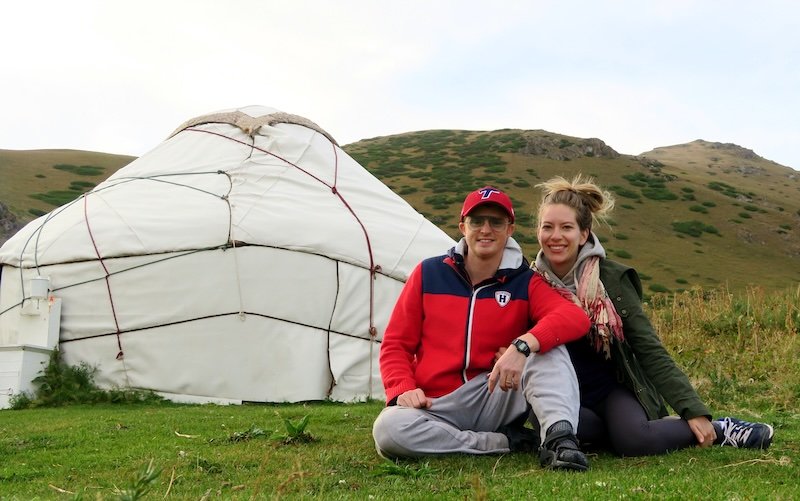
This trip was made possible with the support of Discover Kyrgyzstan and USAID. As always, all opinions expressed here are my own.
And that’s a quick intro to the World Nomad Games in Kyrgyzstan. I hope this guide will come in handy for anyone thinking of attending the games which are held every two years, but if you have any other questions in the meantime, feel free to leave those in the comments below.
Would you attend the World Nomad Games?

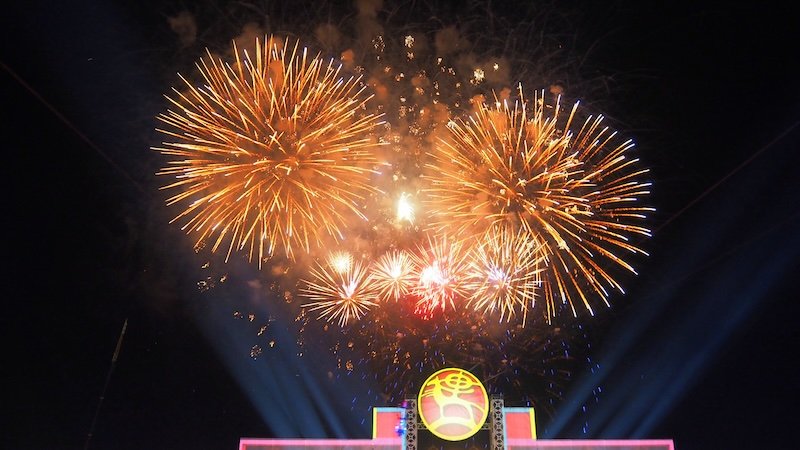
I haven’t heard of this games before. I would love to participate in these events, too. Even as a spectator watching and cheering from the sidelines, I think this would be an experience to remember.
Great photos! Only, I don’t see any plov? Let me know if you still need a rec in Bishkek? 😉
SO stoked we could host you Audrey, and we’re excited you had such a good time. Thanks for the awesome post!
This was a great trip. We had just completed our trip to Nadaam in Mongolia and moved on to Nepal when I first started seeing information about it. It was a lot of the Mongolian games but a much larger scale with many more contests. I had not heard of it before but now will be a visitor in 2018. The pictures were great and I can’t wait for the next games. I read Steven Segal was the person who opened the games. Did you seem him while you were there.
This sounds like such a unique and amazing experience. I love learning about a culture’s games and sports and traditions – it’s such a great way to learn about the culture itself. England has so many unusual and traditional games, but so many of them have gone by the wayside and are being forgotten, which is a shame. I think some are making a comeback (like Cumberland & Westmorland Wrestling), but it still feels like a loss of heritage.
Wow, what an experience! Not sure if I find the headless sheep game cool despite the fact the animal get eaten, but other than that it sounds amazing!
Would love to see this!